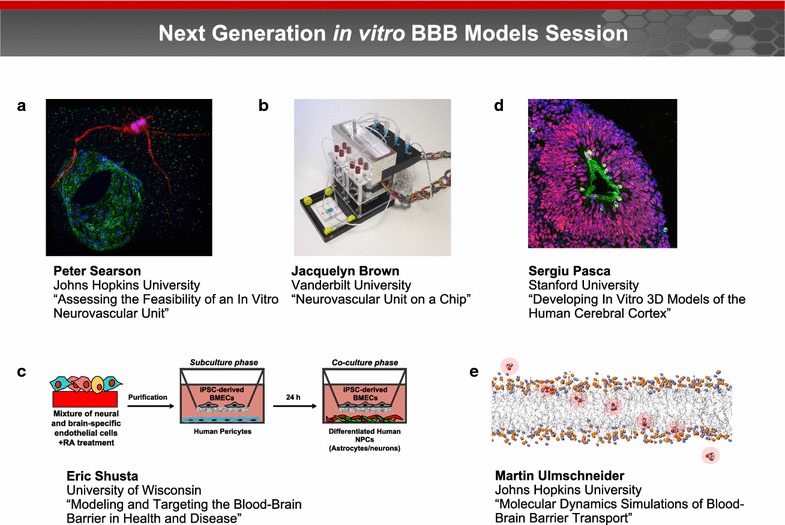Fig. 4.

Next generation in vitro BBB models session. Next generation BBB models span organ-on-a-chip devices and models exploiting organogenesis, microfluidics, 3D printing, and self-organization. These models are enabled by advances in human brain-specific cell lines and tissue engineering, particularly in 3D co-culture and matrix materials. a Dr. Peter Searson noted that stem cell technology has the potential to overcome the limitations of animal-derived cells and immortalized cell lines, and provide a source of human brain-specific microvascular endothelial cells, astrocytes, and pericytes. induced pluripotent stem cells (iPSCs) can be used to generate human brain microvascular endothelial cells (hBMECs) for developing perfusable brain capillary networks that capture the important physical and biological characteristics of the BBB in a physiologically relevant geometry. Image courtesy of Dr. Searson. b Dr. Jacquelyn Brown and colleagues developed a transwell assay that consists of a monolayer of endothelial cells seeded on a porous membrane that is separated into apical and basolateral chambers on either side of the membrane. These platforms have perfusable vascular and brain chambers on either side of the membrane that can be used to measure solute permeability and asses brain penetration. Image courtesy of Dr. Brown. c Dr. Eric Shusta reported how endothelial cells generated from human pluripotent stem cells (hPSCs) can be programmed to possess many BBB attributes, including well-organized tight junctions, polarized efflux transport, and nutrient transporter expression. Image courtesy of Dr. Shusta. d Dr. Sergiu Pasca discussed how spheroids of pluripotent stem cells (PSCs) can be programmed to form structures that resemble the human cerebral cortex. Image courtesy of Dr. Pasca. e Advances in computational methods have enabled a new generation of tools for modeling BBB transport. Dr. Martin Ulmschneider described how these models can simulate spontaneous transmembrane diffusion of small molecules using unbiased long timescale atomic detail molecular dynamics (MD) techniques. Image courtesy of Dr. Ulmschneider
